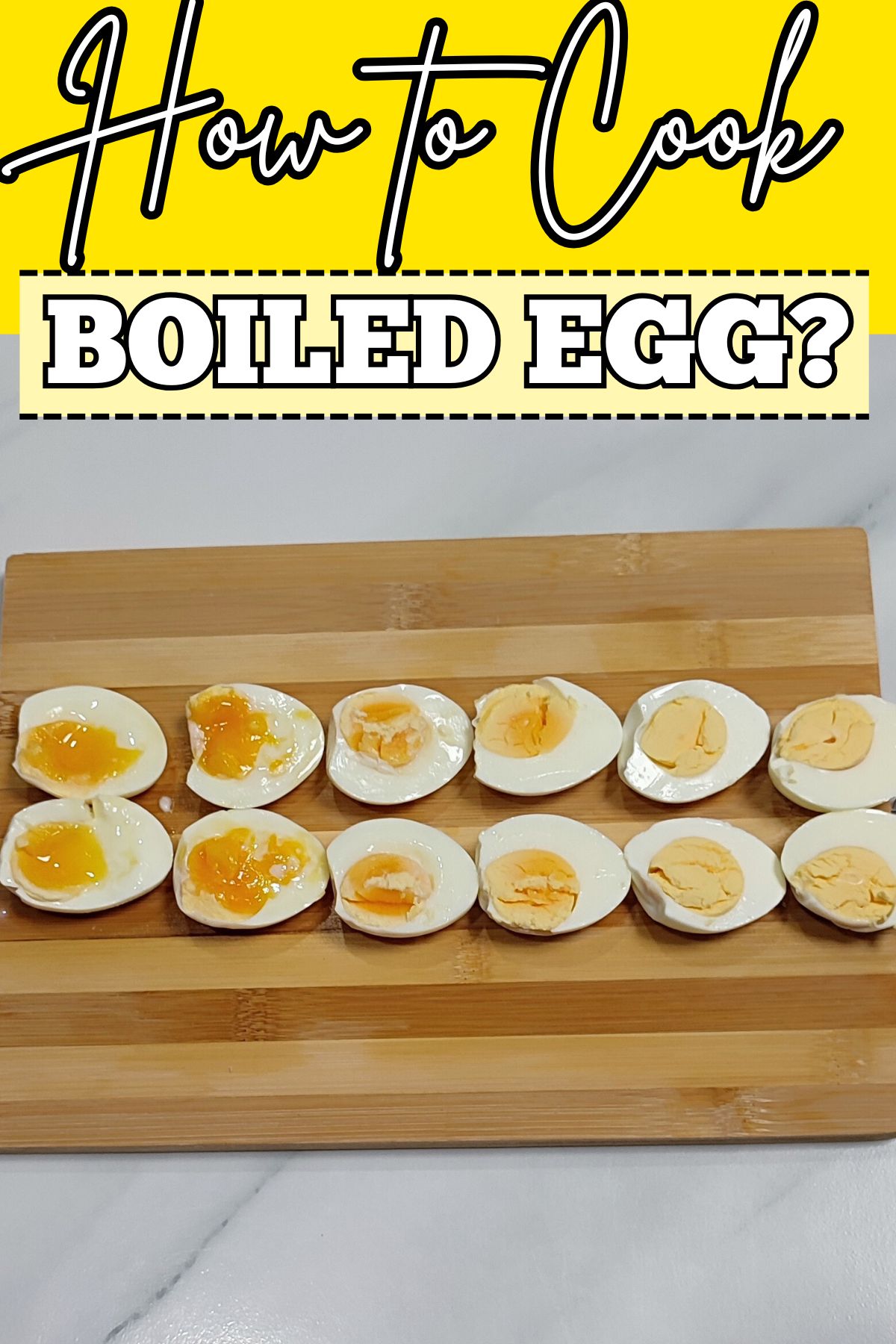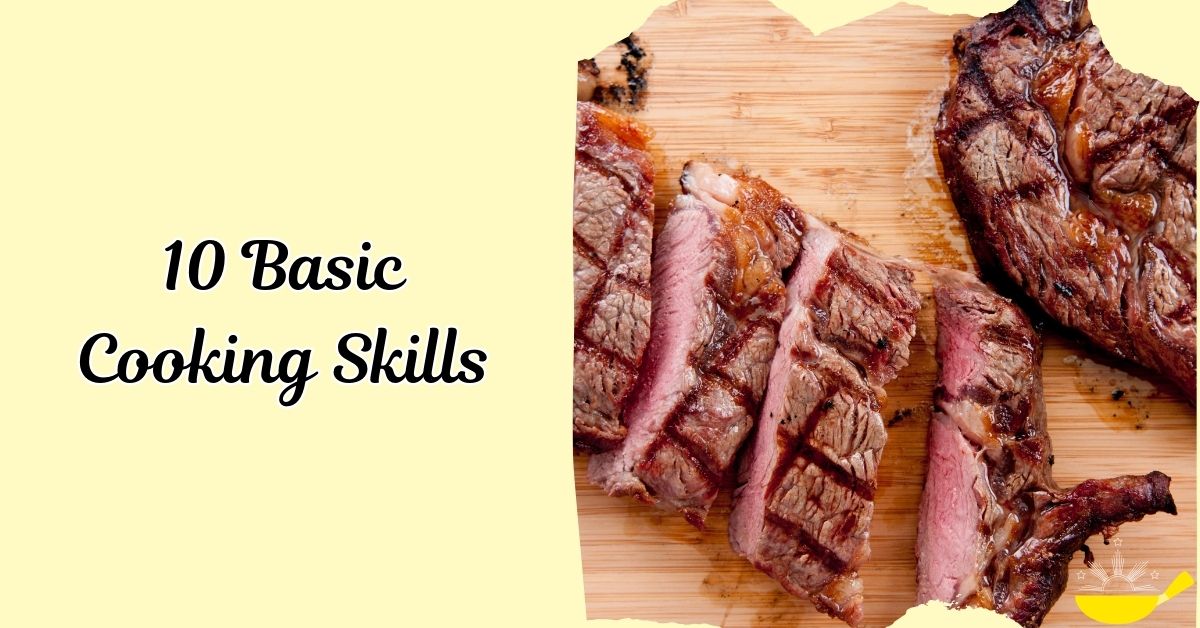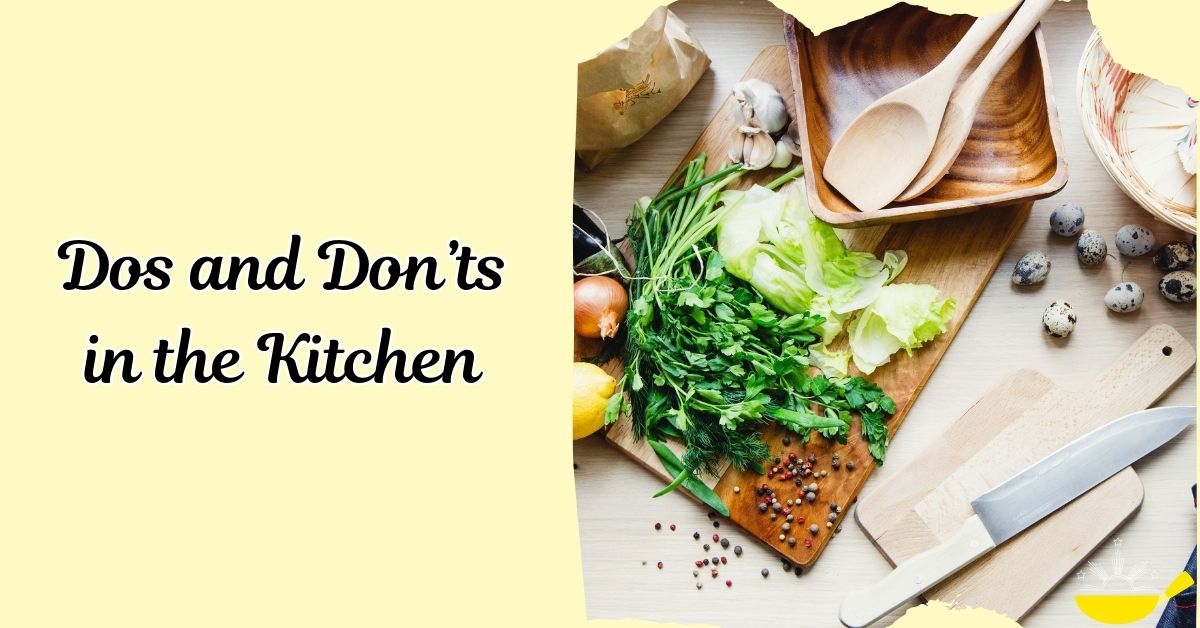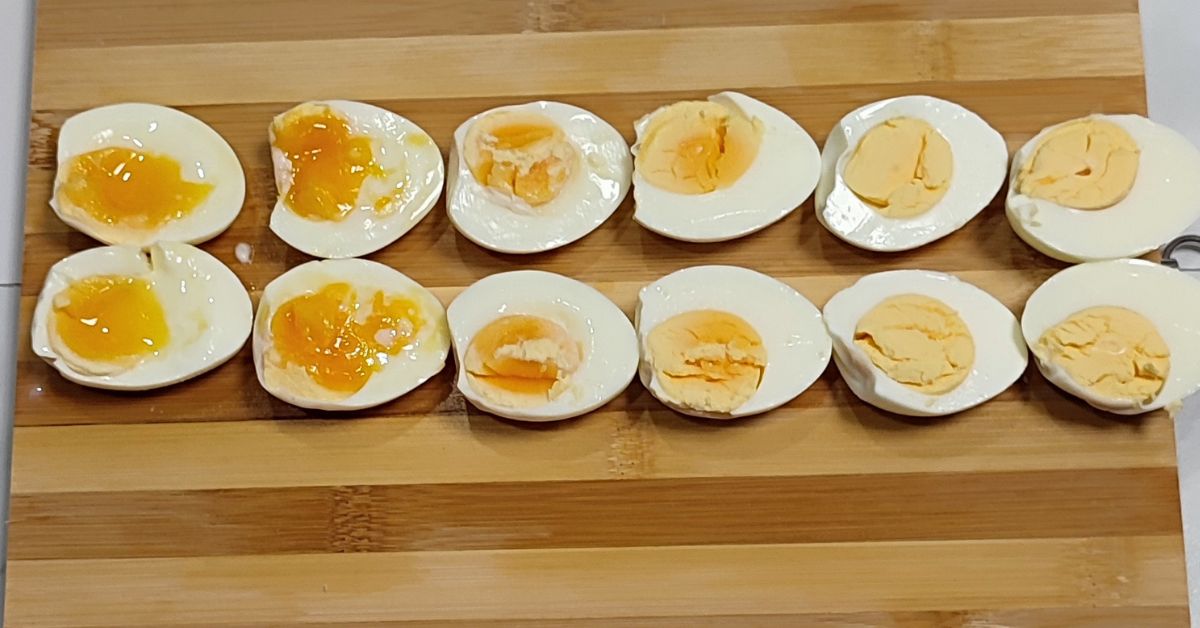
How do you usually like your hard-boiled eggs done?
Some prefer them soft with a slightly runny yolk (like me!), while others go for the fully-cooked, firm yolk. Boiled eggs are simple to make, but getting them just right can be a bit tricky.
Funny how I feel like a winner whenever I manage to flawlessly peel a boiled egg. It’s such a small thing, but it makes me happy. I know it sounds silly, but if you’ve ever had to struggle with a stubborn shell, you’ll understand.
Now, let me share with you my easy steps to boil eggs perfectly every time. Whether you like them soft, medium, or hard, these tips will help you get it right. Let’s start!
Types of Boiled Eggs
At first, I didn’t realize how much the way you cook boiled eggs can affect their taste and texture. But once I started paying attention, I discovered that the cooking time makes a big difference.
Here are the different types of boiled eggs you can make:
Soft-Boiled Eggs
- Soft-boiled eggs have a yolk that’s runny and creamy, while the whites are just set. They’re great for dipping toast strips or adding to a bowl of hot ramen noodles, perfect for adding a Filipino twist.
Medium-Boiled Eggs
- Medium-boiled eggs have a yolk that’s mostly set but still a bit creamy. They’re perfect for slicing onto salads or enjoying as a quick and tasty snack. The yolk is soft enough to spread its goodness over your dish, a favorite in Filipino cuisine for its versatility.
Hard-Boiled Eggs
- Hard-boiled eggs have a fully cooked yolk and firm whites. They’re very versatile—you can chop them up for egg salads or simply sprinkle them with a bit of salt and enjoy. They’re also handy for preparing ahead, as they keep well in the fridge, a practical choice for meal prepping in Filipino households.
Choosing the Right Eggs
Here in the Philippines, eggs are one of the staple ingredients found in every kitchen. I believe you will always find an egg left in every refrigerator in a Filipino household. But it’s still best to choose the right egg for your cooking needs. Here’s what you should keep in mind:
Freshness and Quality of Eggs
Fresh eggs are crucial for achieving the best results when boiling. They have firm whites and yolks that hold together well, ideal for dishes like sinigang and adobo. Look for eggs with intact shells and a clear, firm egg white to ensure freshness. Avoid eggs with cracks or a runny consistency, as they can affect the texture of your dish.
Size and Type of Eggs
Eggs come in different sizes—large, medium, and small—which can slightly alter cooking times. In the Philippines, large and medium-sized eggs are commonly used in recipes. The type of egg, whether white or brown, doesn’t significantly affect taste but can vary in appearance. Choose the size that best fits your recipe’s requirements to ensure your dishes turn out perfectly.
Eggs come in different sizes—large, medium, and small—which can slightly alter cooking times. In the Philippines, large and medium-sized eggs are commonly used in recipes. The type of egg, whether white or brown, doesn’t significantly affect taste but can vary in appearance. Choose the size that best fits your recipe’s requirements to ensure your dishes turn out perfectly.
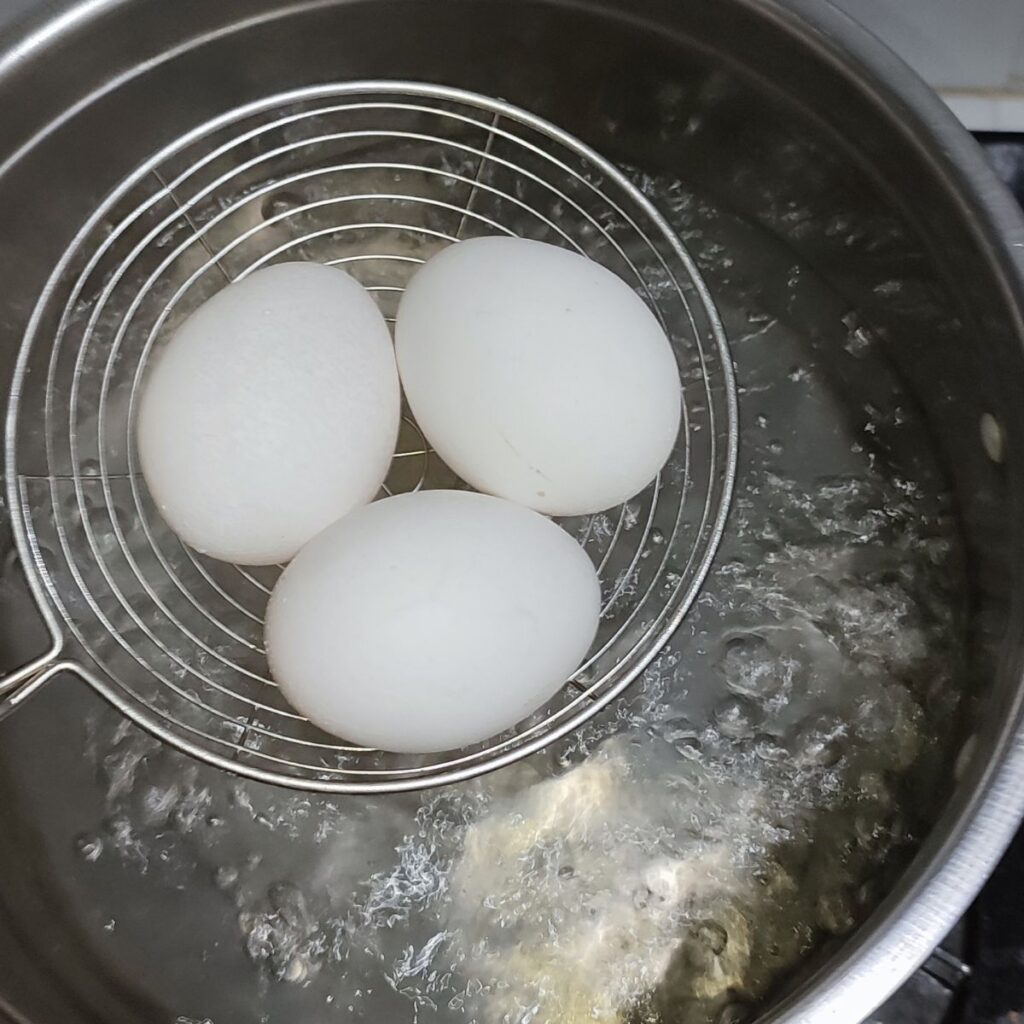
Step-by-Step Guide to Boiling Eggs
Boiling eggs may seem straightforward, but following these steps will help you achieve perfect results every time. Trust me this works for me every time!
Step 1: Preparation
Selecting the Pot Size: Choose a pot large enough to hold the eggs in a single layer. This ensures even cooking.
Adding Water and Salt: Fill the pot with enough water to cover the eggs by about an inch. Adding a pinch of salt or 1 tablespoon of vinegar can help prevent cracking and make the eggs easier to peel later.
Size and Type of Eggs
Bringing Water to a Boil: Place the pot over medium-high heat and bring the water to a rolling boil.
Gently Placing Eggs in Boiling Water: Carefully lower the eggs into the boiling water using a spoon or tongs to avoid cracking the shells.
Timing for Different Types of Boiled Eggs:
- Soft-boiled: 4-6 minutes
- Medium-boiled: 7-9 minutes
- Hard-boiled: 10-12 minutes
Adjust the timing based on your preference for yolk consistency.
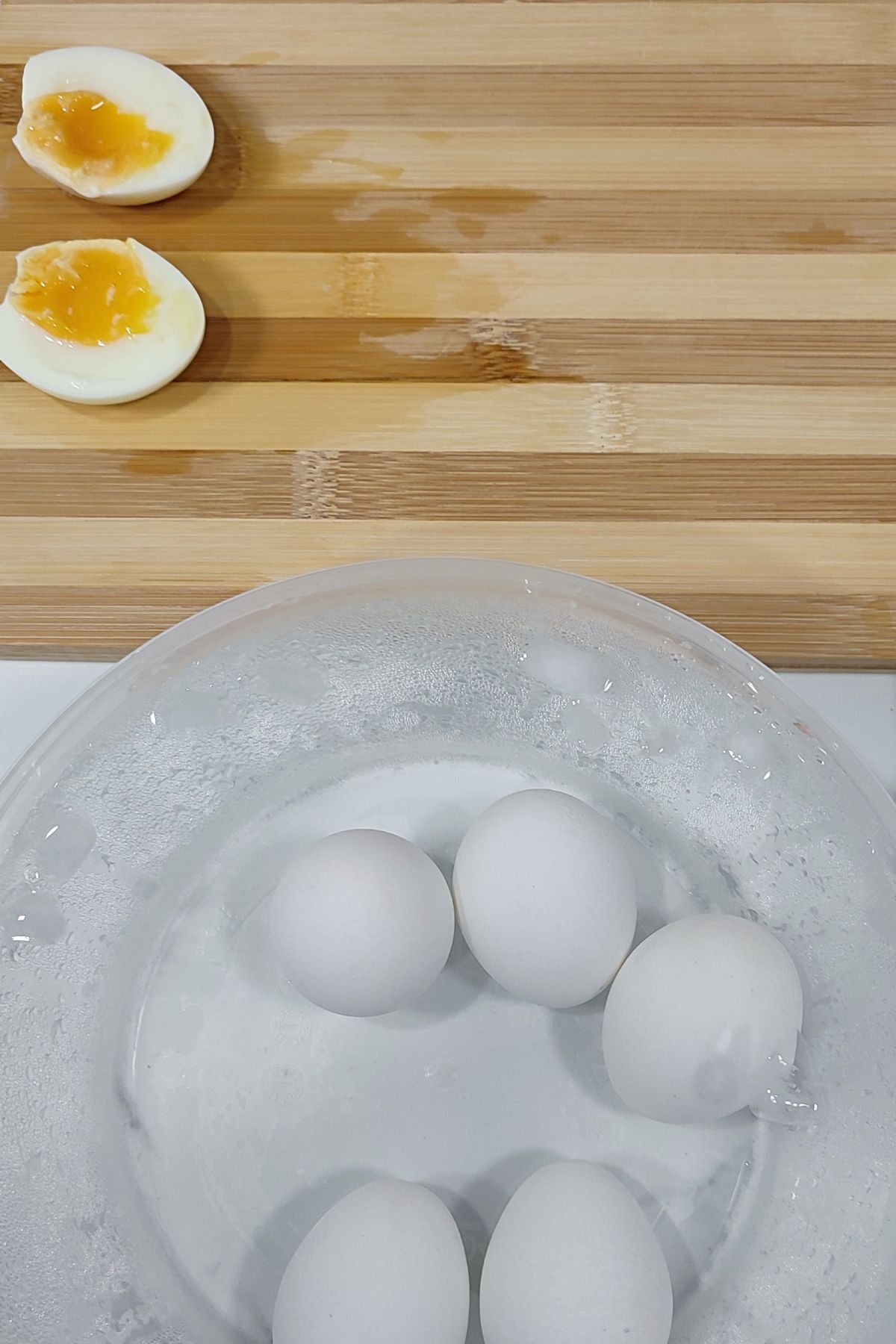
What Could Go Wrong When Boiling Eggs?
Even with the best preparation, sometimes things can go wrong when boiling eggs. Here are some common issues and how to fix them:
Cracked Eggs
- Prevention: To prevent eggs from cracking, make sure to add them to the water gently. Using a spoon or tongs can help with this. Also, bringing the eggs to room temperature before boiling can reduce the risk of cracking.
- Solution: If an egg does crack, you can still use it, but it might not look as pretty. Try to handle cracked eggs carefully when peeling to avoid further damage.
Hard-to-Peel Eggs
- Prevention: Fresh eggs are usually harder to peel than older ones. If possible, use eggs that are a week or two old. Adding a pinch of salt to the boiling water can also help.
- Solution: After boiling, immediately place the eggs in an ice bath for several minutes. This helps the shell contract and makes peeling easier. Gently tap and roll the eggs to crack the shell all over, then peel starting from the wider end where there’s an air pocket.
Overcooked or Undercooked Eggs
- Prevention: Timing is key. Use a timer to ensure you boil the eggs for the right amount of time based on the type you want—soft, medium, or hard-boiled.
- Solution: If your eggs are overcooked, you’ll notice a greenish ring around the yolk. They are still safe to eat but may have a slightly different texture and taste. For undercooked eggs, you can return them to boiling water for a few more minutes. Be careful not to overcook them in the process.
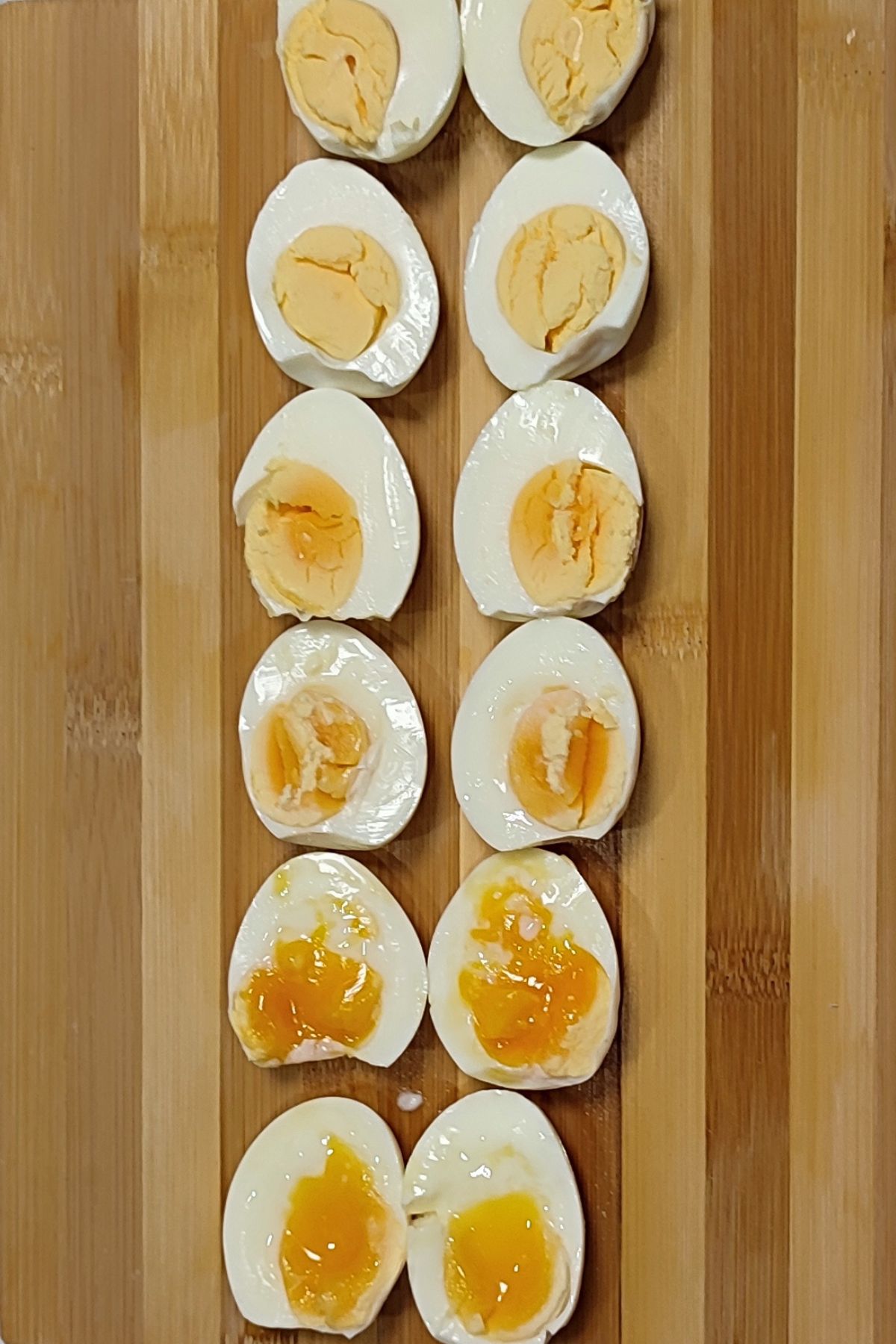
Tips for Perfectly Boiled Eggs Every Time
Getting perfectly boiled eggs is actually easy. Most of the time, what really works for me is following these few simple tips:
Consistent Timing
- Timing is everything when it comes to boiling eggs. Whether you like them soft, medium, or hard-boiled, always use a timer to keep track. This way, you can get the same perfect results every time.
Proper Cooling
- After boiling, immediately put the eggs in a bowl of ice water. This stops the cooking process and makes them easier to peel. Let them sit in the ice bath for at least 5 minutes before peeling.
Freshness of Eggs
- Fresh eggs can be harder to peel, so it’s often better to use eggs that are at least a week old. Freshness also affects taste and texture, so make sure your eggs are not too old.
Using a Timer for Precision
- A timer is your best friend when boiling eggs. It ensures you don’t overcook or undercook them. Set the timer as soon as the water starts boiling and follow these times:
- Soft-boiled: 4-6 minutes
- Medium-boiled: 7-9 minutes
- Hard-boiled: 10-12 minutes
Frequently Asked Questions
Fresh eggs have firm whites and yolks; you can also do a float test—fresh eggs sink, while older eggs float.
Immediately transfer them to a bowl filled with ice water and let them sit for at least 5 minutes.
Yes, you can reuse the water for another batch of eggs or for watering plants once it cools down.
